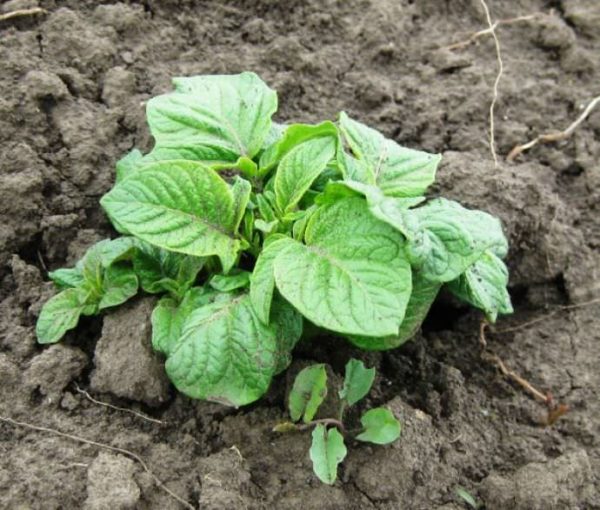
Caring for potatoes after germination is very important, since it depends on how the plant will develop and bear fruit. If the preparatory measures are carried out incorrectly, then the potatoes will not sprout or freeze in development.
Why does potato sprout poorly, what if the plant does not develop properly? The following describes all the features of planting potatoes and the reasons why potatoes can stop growing.
Content
Normal development of potatoes
How many days does potato emerge after planting? It depends on the temperature conditions of the area. Normally, the germination period of tubers after their instillation is about 10 days. Twelve days is also a variant of the norm. A longer period already shows that the plant is lagging behind in development. But in all areas? No, the alarm after 13 days without seedlings needs to be sounded only to farmers living in the south of the country. In the northern regions, the germination period is at least 15 days, and sometimes 25.
Potato sprouting period depends on the variety. What day does the potato crop after planting southern crops? In warm areas, they germinate quickly, in less than 10 days. But if you mistakenly purchase them for planting in the north, then the plant may even die. Northern cultures, on the other hand, are not subject to such problems and develop steadily over 15–25 days, regardless of the area of planting.
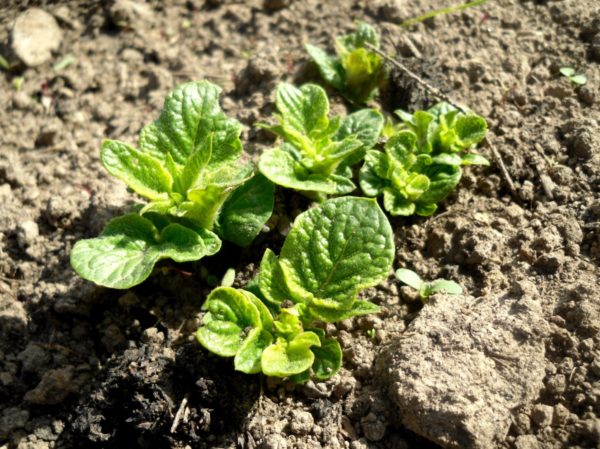
Any deviations in the development of culture are an occasion to check the conditions for the growth of bushes. All the problems that may arise when growing potatoes are described below.
Problems that may appear at the beginning of development
Potatoes are sensitive to frost, temperature changes, drought, lack of nutrients. In this regard, at the slightest deviation from proper care, a culture may stop growing or die.
The main problems that can occur immediately after planting seeds:
- Sprouts do not appear. This suggests that the soil lacks nutrients or the tubers damaged insects. Also a common reason for the lack of seedlings is the wrong selection of varieties or seeds.
- The potato has sprouted and does not grow. This phenomenon is characteristic of cold regions with a sharp temperature drop during the day and night. The soil can retain heat at night, but the air adversely affects young shoots, not allowing them to grow in size. Also, a lack of growth may be due to insufficient care.
- The plant develops only in the soil. Why doesn’t the potato sprout and the tubers grow? Most likely, the variety is southern and cannot grow in conditions of cold air, but the soil temperature and nutrient content are sufficient for the development of nodules. Simultaneously with the emergence of sprouts, an active "wheezing" of the tuber occurs - many small root crops develop, which prevents the stem from growing.Why is potato whelping? The case may be in poorly selected or weak varieties of potatoes, in adverse external conditions. Or the potatoes are buried too deep.
- Often sprouts appear, but in insufficient quantities - only half or even a third sprout. The remaining tubers give the stems later, after 10-15 days. Why does potato sprout unevenly? This is due to poor seed or uneven distribution of fertilizers. Sometimes farmers confuse varieties by planting earlier and later ones.
Sprouting problems can be easily prevented by ensuring proper potato care. How to do this is described below.
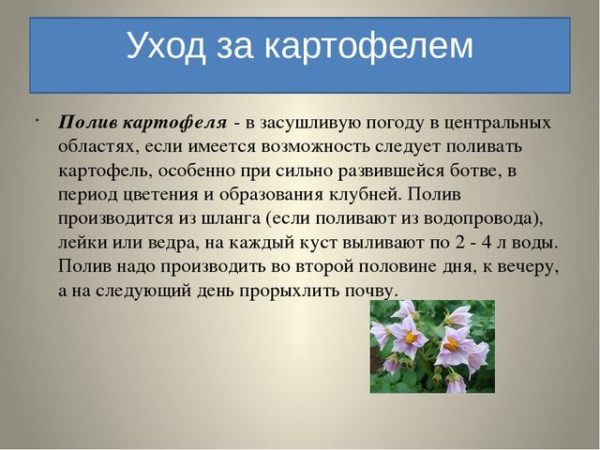
What is the reason for improper growth
Not all of the root causes are listed above, due to which the development of potatoes may slow down or stop. There are many more factors that influence the growth of culture.
Potato does not sprout - reasons:
- Fine seed. You can not plant those nodules that have not reached 25 g by weight. The exception is potato varieties with small tubers.
- Poor seed. If the tubers have black spots, cut places, serious deformations, then they are unlikely to shoot.
- Seeds purchased at grocery stores. In hypermarkets, vegetable products are processed so that they are stored longer. Preservatives reduce the viability of the tuber; it is less likely to shoot than potatoes purchased in the vegetable shop.
- Pest attack. The bear and some other insects (and their larvae) eat through the tubers and can destroy the entire crop.
- Lack of nutrition. Minerals must enter the plant system regularly. It is necessary to do top dressing, fertilize the soil before sowing. If these measures have not been taken, then growth will slow down or stop.
Weather conditions have the greatest impact. If drought occurs, the plant dies. Even with an abundance of minerals in the kidney, it cannot function normally, because the nutrients do not enter the root system without fluid. Excess moisture at the beginning of heavy rains is also dangerous. It can lead to rotting of tubers, which will prevent them from rising at all.
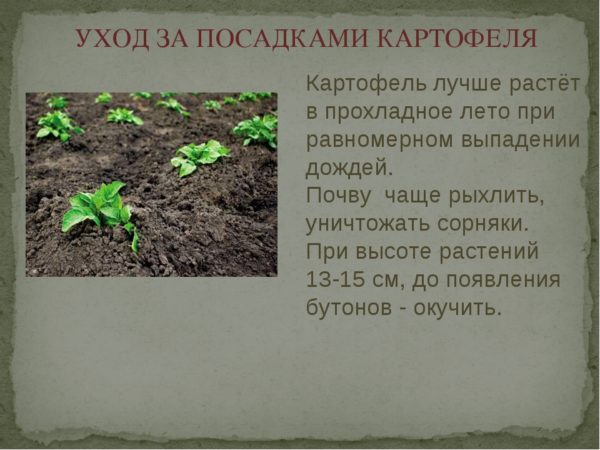
If frosts and nightly cold spells start, potatoes will sprout more slowly. It can die at too low soil temperature or stop in development, falling into "hibernation" - a condition in which tubers are stored during winter.
Having understood why the potato does not appear uniformly, one should proceed to eliminate the problem.
How to eliminate a delay in plant development
Potatoes do not emerge - what to do? Even if the potato has already been planted, it is still possible to improve the conditions for its germination: start to properly water, fertilize. Secondary planting of tubers is also allowed, although it takes a lot of time and effort and does not always eliminate the reason why the potato does not sprout.
It is better to start actively fertilizing the earth, hilling it, covering the sprouts with an awning from a special material. The shelter of culture is especially important. Cover the landing should be at night, before the onset of evening cooling. This action is relevant in the spring and in the cold period of summer. Shelter reduces the risk of death of sprouts due to frost, allows them to develop normally even in very cold spring nights.
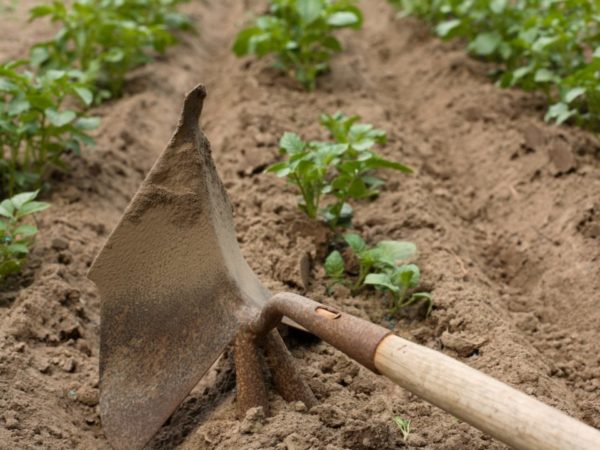
Fertilizer should not be overdone. It is enough to carry out irrigation with fertilizers dissolved in water once every two weeks.At the same time, water for dilution must be warm, it can not be poured too much in one place.
All weeds should be removed from the soil - they can pick up nutrients and inhibit plant development. If treatment for parasites and diseases has not yet been carried out, it should be provided. While the sprouts have not yet sprouted or have reached the “age” of 2 weeks, you can safely cultivate the soil.
An extreme measure is digging up beds and removing bad tubers. Not sprouted, rotten and pest-affected nodules will only harm the neighbors by rotting. If the seeds were planted too close, some of them will have to be removed and the other discharged. Then development can begin with a new force.
If even after these measures the potato did not sprout, what should I do? Completely change the seed. Potatoes that did not sprout even after a proper planting with constant care are simply defective and non-viable.

How to prepare the culture for landing
Having understood why potatoes do not grow well, it is easy to provide “prevention” of the slow development of potatoes. Tuber preparation should begin a month before planting.
Seeds need to be selected.
Are deleted:
- small tubers;
- seeds with damage;
- rotten units;
- diseased specimens.
It is very important to properly bury the seeds. Planting too deep is the main reason why potatoes do not sprout, but give tubers in the ground. Nodules should be 10 cm from the surface of the soil. Tubers can be planted only when the soil temperature reaches 10 degrees. The level of heating of the earth is measured by a separate thermometer, the temperature of the soil and air does not match. Up to 10 degrees of heat, the earth warms up in late spring, when the air temperature is about 20 degrees.
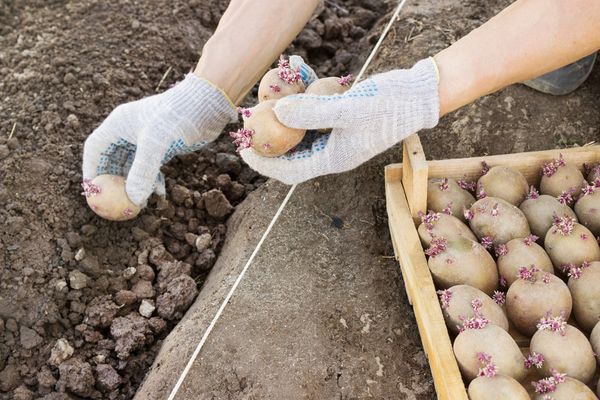
Before planting, it is advisable to treat the tubers with copper sulfate. This will reduce the incidence of culture.
After landing, you need to regularly:
- water the sprouts;
- to hush bushes;
- feed plants;
- carry out procedures against pests.
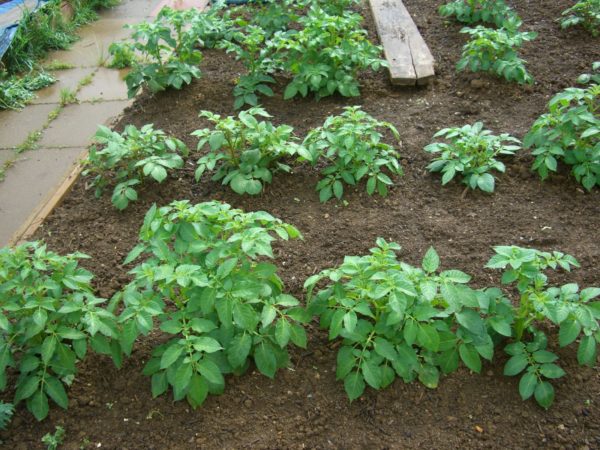
Reviews
Dmitry K., 39 years old, farmer:
“Before sowing seeds, I select the affected tubers, treat the seeds with copper sulfate and plant as soon as the soil heats up to 10 degrees. This is enough for the sprouts to appear simultaneously and on time. Further development is already dependent on care. Those planted areas that are less frequently cultivated develop worse. The priority areas where my workers constantly carry out hilling, watering, approval, of course, give more yield and more developed plants there. ”
Anastasia F., 78 years old, vegetable grower:
“Previously, potatoes did not sprout because I hardly followed the rules of planting. Buried tubers "on a hunch", it turned out that too deep. When I learned all the rules for planting tubers and applied them in practice, the development of the bushes went much faster: they sprouted two times earlier, yielded several times more yield, there were almost no non-sprouted tubers. ”
George N., 52 years old, vegetable grower:
“I always take good care of planted tubers. I water, fertilize, and treat against parasites in a timely and regular manner. I highly recommend pre-treatment of the soil from insects.They can destroy the entire crop at the end of summer or all the seed in the spring, if you do not provide protection from them. Even if all the planting rules are followed, half of the tubers may die. ”
If you follow the simple rules of sowing and caring for potatoes, the problems with seedlings will completely disappear. Many knowledge comes with experience, therefore, if the tubers did not sprout for the first time, vegetable production should not be immediately abandoned. Over time, any person will learn to properly care for the culture.




 Description and description of varieties in Belarus with a photo
Description and description of varieties in Belarus with a photo Do I need to pick flowers from potatoes: why do they do it
Do I need to pick flowers from potatoes: why do they do it When to dig potatoes: timing and availability of new potatoes
When to dig potatoes: timing and availability of new potatoes How to grow a good potato crop: various methods and methods, planting and care
How to grow a good potato crop: various methods and methods, planting and care